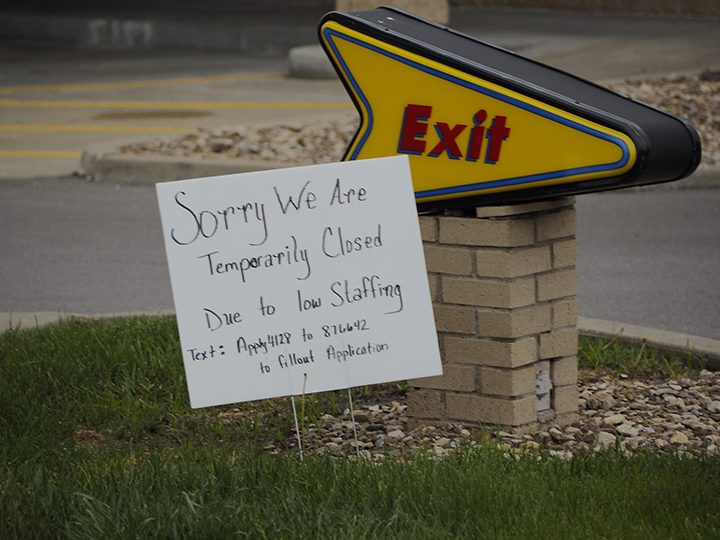
Artificial Intelligence’s fame in the enterprises continues to develop, yet practices and developments remain stagnant as associations run into deterrents while deploying AI systems. O’Reilly’s 2021 AI Adoption in the Enterprise report, which reviewed in excess of 3,500 business pioneers, observed that an absence of gifted individuals and trouble hiring bested the rundown of difficulties in AI, with 19% of respondents citing it as a “huge” obstruction – revealing how relentless the talent and AI skills gap there may be.
What is AI Talent Shortage?
Organizations all over the world are looking at an ability gap in AI and are battling to recruit skillful workers in this steadily evolving scene. Since each organization is making progress toward an information-driven methodology, there is an ascent in the mix of advances like computerized reasoning, information science, etc. to accomplish business targets. Be that as it may, the shortfall of unrivaled ability in this domain is hindering the development of firms. Truth be told, research lets us know that as much as 85% of AI projects flop because of hazards, disarray, and the absence of efforts of upskilling amongst the employees..
A new report distributed by the online learning platform Coursera, states that out of the 45 million students on the stage, 2,000,000 took a crack at AI-based substances in 2019. These courses were taken by aspirants as well as CXOs and representatives, bringing about an abrupt flood.
The discoveries concur with a new KPMG study that uncovered countless associations that have expanded their interests in AI to the point that leaders are currently worried about moving excessively fast. For sure, Deloitte says 62% of respondents to its corporate October 2018 report embraced some type of AI, up from 53% in 2019. However, reception doesn’t meet 100% of the time with progress, as the generally 25% of organizations that have seen a large portion of their AI projects will tell you.
Sorrow over the AI ability lack in the U.S. has turned into a natural cease from private industry. As per a report by Chinese innovation organization Tencent, there are around 300,000 AI experts worldwide however “millions’ ‘ of jobs are accessible. In 2018, Element AI assessed that of the 22,000 Phd.- taught analysts all around the world chipping away at AI improvement and examination, just 25% are “knowledgeable enough in the innovation to work with groups to take it from exploration to application.” And a 2019 Gartner review saw that 54% of boss data officials view this lack in ability as the greatest test confronting their association.
Steps to bridge the AI talent shortage
1. Imparting AI Education-
The instruction area has been delayed in the take-up of AI mostly because of worries of instructors and guardians about confiding in machines in educating understudies. However, presently AI is being utilized to alter the instruction area and answer the numerous issues that have been tormenting the training area for a long time. While social, monetary unsettling influences keep on existing in the pandemic, adaptive learning advances have the ability to coordinate understudies towards their professions. The most important challenge lies in giving equivalent insistence to all understudies to get to live classes, course material, and plentiful internet learning stages, according to AI scientists. Numerous understudies (the figures shift across various nations) battle to partake in advanced learning because of untrustworthy web associations. There is a huge hole between the people who come from special foundations and the individuals who come from impeded foundations. Besides, the stage changes, learning, and showing styles likewise change. Since the conventional classes are closed, the world needs to consider maintainable training and learning methodologies to depend on understudies with schooling.
2. Upskilling Current Employees-
In present situations, the working environment scene is going through significant changes. Coronavirus improved the current lopsided employing area as numerous experts lost their positions, while others were attempting to demonstrate their abilities and manage the worldwide pandemic emergency. While certain organizations had to lay off their workers, different others depended on interior versatility as a suitable choice. Nonetheless, what goes unrecognized is that associations need to relinquish their quality ability since they don’t have the necessary abilities to adapt to erratic occasions or emergency circumstances. Inferable from these unsteady occasions, organizations are moving past customary courses and are consolidating trendy procedures of reskilling and upskilling their workers. Presenting work environment training isn’t just assisting organizations with adapting to the difficulties but at the same time is guaranteeing the consistent continuation of their tasks since AI is an ever-updating form of technology.
3.Hiring certified AI talent-
As organizations fight with ability deficiencies, they need to utilize new drives right from the underlying strides of enlistment. Organizations need to look past resumes and expert experience prerequisites posted, and on second thought to different abilities and potential that an up-and-comer might have. Applicants who have AI certifications and training are to be entertained and preferred over the ones aspiring to do the course. Since the company needs AI professionals, certifications are to be valued. Talent shortages are a real threat to organizations. They can halt business. Technology-driven tools can solve this problem and help businesses compete better in the market.
Final Words
Fishing from a similar ability pool more than once will before long evaporate the sources. Tragically, organizations are pursuing a similarly restricted ability pool for enlisting. Organizations need to grow the limits of ability sources to more readily investigate more up-to-date up-and-comers having the most recent abilities. Recruiting innovation works with this development via looking through sources, for example, interpersonal organizations, portfolio locales, proficient networks, continuous data sets, and occupation sheets to track down possible employees. Generally, recruiting chiefs have zeroed in on submitting resumes or applications and at times on an interpersonal organization stage like LinkedIn to look for competitors.
